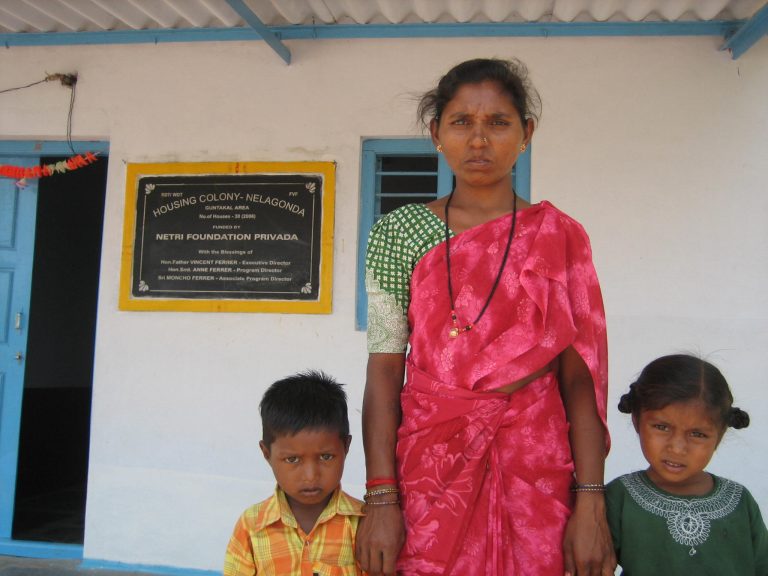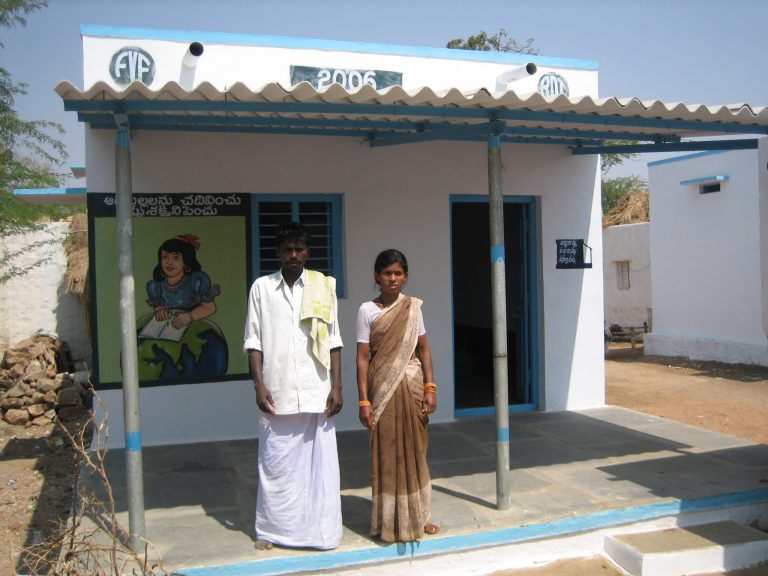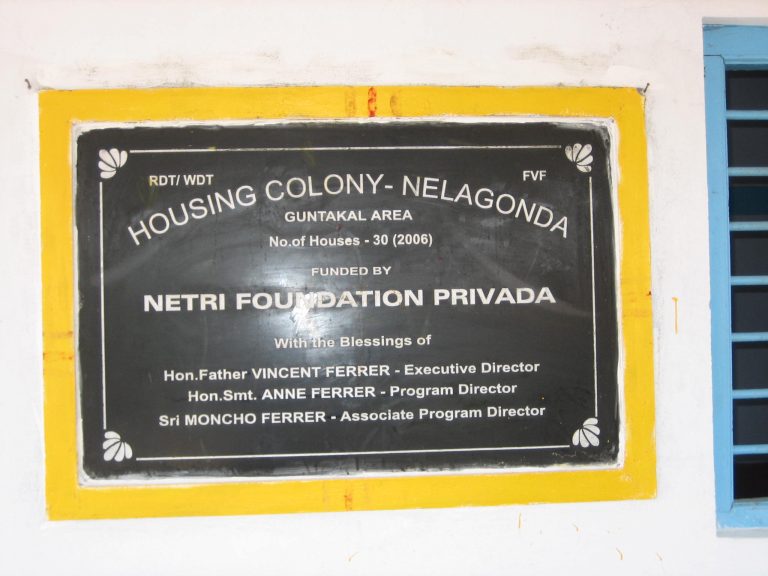Construction of 10 homes
India, 2006
Social Issue
Although the Indian Constitution of 1950 establishes that no one will be discriminated against because of their caste, the reality for the “Dalits”, the humblest caste in India, is quite different. They live in conditions of extreme poverty and suffer great economic inequality and social discrimination.
Especially serious is the situation suffered by children. A high percentage of Dalit boys and girls do not attend or drop out of school before finishing primary education, forcing them to work on the streets or begging. In the case of girls, the situation is even worse, since being a Dalit woman involves triple discrimination by caste, class, and gender. This house construction project is carried out to tackle this situation, to dignify and improve the quality of life of all these people.
Our Response
The construction of ten houses part of the community of Nelagonda town, in the Gunkatal area, Uravaconda region, is carried out in collaboration with the Vicente Ferrer Foundation. The ten families benefited in Nelagonda and, specifically, the ten women (between 22 and 50 years old) in the name of whom the houses will be, are peasants who belong to the Dalit caste, and who did not have access to primary education.
The houses are built about 40 centimeters above the ground to avoid the consequences of the monsoon rains, with thick solid brick walls and small windows to protect their inhabitants from the high temperatures outside. They consist of two rooms: A space for the kitchen, and a space that serves as a living room-bedroom, with a porch protected by a light cover, where the family carries out many of its domestic activities. The total area of the house is 42 square meters.
Expected Social Impact
Their old houses were built with little solid materials, generally mud and/or stones, and covered with straw or grass on the roof. The new houses provide their inhabitants with a more hygienic life and less exposed to risks such as snake bites or scorpion stings, which are common in the area.
The houses have been registered in the wife’s name, a fact unheard of in Indian society. This way, both the women and their children are protected from a possible abandonment by their husbands.
In the case of having school-age children, they must attend community schools or public schools as one of the requirements to be one of the women beneficiaries of a home.
The increase in self-esteem and dignity of the beneficiary families is also notable. All of them have participated in the construction of the houses. Families like Hanumakka, Obulamma, Malingamma, Vannuramma, or Rangamma, whom we see in the photos.




